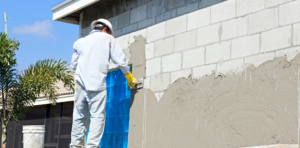Wastewater flows to your septic tank, where bacteria decompose some of the waste. Heavy solids settle to the bottom of the tank and form sludge. Fats, oils and grease float to the top and form a scum layer.
The wastewater then seeps into the drain field through perforated pipes. This naturally filters and disinfects untreated wastewater before it trickles into nearby groundwater or surface water bodies. Click https://www.septictankarmadale.com.au/ to learn more.

Septic systems take wastewater that flows from homes and treat it before it goes back to the ground. This process is called sewage treatment, and it uses natural and mechanical processes to purify the water and remove organic waste materials. The system is usually made of concrete, but newer models are constructed from high-quality plastics. It is designed to hold between 1,000 and 1,500 gallons. The tank itself is often located outside the home, but it can be buried underground.
Wastewater from the house flows into the septic tank through a pipe. Once inside, bacteria in the tank will digest some of the waste material. Heavy solids will settle to the bottom of the tank, and oils and grease will float to the top. The clarified liquid that remains is known as effluent. This liquid will flow through the outlet of the tank, which should have a screen or filter to block large particles.
The effluent then flows through a series of perforated pipes buried in the ground. These pipes are often called drain fields or leach fields, and they slowly release the liquid into the soil. The soil will naturally purify the remaining wastewater through evaporation and transpiration.
If the septic tank isn’t properly maintained, it can cause a lot of damage. To keep it in good working condition, you must have the septic tank pumped regularly. In addition, you must replace the septic tank’s lid and screen to prevent the entry of harmful organisms and debris.
A septic tank that has three chambers will provide extra filtration. However, it is important to avoid flushing anything other than toilet paper into the septic tank. Items that aren’t safe to flush include diapers, feminine products, kitty litter, chemicals, and even some handi-wipes.
Most septic tanks don’t have a pump, but there are some that do. These pumps are used to move the wastewater from the house to the septic tank and then to the drainage field. This eliminates the need for a secondary tank and helps to speed up the process.
Maintenance
A septic tank is an underground storage chamber that collects and separates household waste materials. Solid waste settles at the bottom of the tank, while liquids and lighter solids float to the surface. Bacteria in the tank break down these contaminants. After treatment, the wastewater flows to a drain field for further treatment in the soil. The septic tank and the drain field are an integral part of your home’s plumbing system. It is important to maintain your septic system to avoid problems and costly repairs.
A professional septic tank service can help you determine the best maintenance schedule for your particular system. A professional can also inspect your septic tank and pipes to detect any potential issues. This prevents major problems that may require expensive repair or replacement.
There are some tasks that homeowners can do on their own, such as checking for sludge levels and removing the lid to see how full the tank is. Some homeowners choose to use biological additives that claim to increase the bacteria in the tank and speed up the breakdown process of solids and scum. However, research has shown that these products do not reduce the need for regular pumping of the septic tank.
Other tasks that homeowners can do include limiting the amount of garbage that goes down the drains. This includes avoiding using garbage disposals, which can double the amount of solids that go into the tank. It is also a good idea to avoid pouring cooking greases and oils down the drain. These substances can build up in the septic tank and eventually clog the inlet or outlet. It is also a good idea to keep pets and children away from the septic system.
Leaks and ruptured septic tanks can cause a sewage backup that can contaminate nearby drinking water wells and local waterways. Excess nutrients in sewage can promote algae growth in lakes and rivers, which uses up oxygen that harms fish and other wildlife.
Make sure to keep surface waters and cars, tractors, and heavy equipment away from the septic system and the drainfield. Plant grass, shallow-rooted flowers or native plants over the absorption field to help keep it covered. Do not plant trees, shrubs or deep-rooted vegetables over the absorption field. It is also a good idea to map out the location of the septic tank, drainfield and repair area. This will help prevent damaging the system when doing yard work or construction projects.
Replacement
When your septic tank starts to fail, it can become a huge mess. In some cases, it may even affect your health. But you can take steps to protect yourself.
You should always have your septic system inspected and maintained to keep it working properly. You also need to be careful about what you put down the drains, as a septic system does not have the same level of protection as a centralized sewer system.
Your septic tank is a large concrete box that holds all the waste from your home’s toilets and other plumbing. It contains bacteria and yeasts that break down the sewage, separating floatable material like oils and grease from the solids and liquids. Eventually, all the water and waste leave the tank into a drainfield where it is slowly released into the soil.
Most septic tanks need to be pumped out fairly often, with the frequency varying depending on how much you use your system. You can avoid some of these costs by using additives that increase the number of microorganisms in the tank, allowing you to go longer between pumpings.
A septic system is an excellent alternative to a municipal sewer system, especially if you live in a rural area or a remote location with poor infrastructure. But if the system is not properly sited and maintained, it can pollute nearby groundwater.
Leaks in a septic tank can cause a toxic gas that seeps into the house and is very dangerous to breathe. These leaks can also damage the surrounding drain field and contaminate the soil. They can even cause toxic algae blooms in surface waters.
The good news is that a septic system usually works well for 20 or 30 years, or more. You can often spot a problem if you notice puddles of sewage ponding in the yard, which is a sign that the drain field isn’t functioning properly.
You can also check the septic system by flushing a toilet. If it doesn’t flush, you probably need to replace the septic tank or install an alternate treatment system.
Cost
The cost of a new septic tank varies. A large factor is the size of the tank needed to accommodate your home. A typical three bedroom home needs a 1,000 gallon tank that costs an average of $6,000. A larger tank will run the homeowner up to $11,000.
Other factors include the type of septic system and installation fees. A septic tank can be made of concrete, fiberglass, or polyethylene. The choice of material will impact the price as each has pros and cons. For example, fiberglass tanks are less expensive than concrete. However, they are not as durable as a concrete tank.
A septic tank is a buried water-tight container that holds the wastewater from all of your toilets, sinks and faucets. The waste is broken down by bacteria that live in the tank. Heavy solids (dirt, grit, unconsumed food) sink to the bottom of the tank where it forms a layer called sludge. Lighter masses (oil, grease and floatable substances such as hair and soap) rise to the top of the tank where they form a layer of scum. A T-shaped outlet prevents sludge and scum from leaving the tank. The clarified liquid, known as effluent, exits the tank through a drainfield area where it undergoes further natural purification.
Before you can install a septic system, your land must be tested. A professional will test the soil to make sure that it can support a drain field and that it is free of boulders and other impediments. The testing process can run between $1,000 and $2,000.
In some cases, an existing septic tank can be re-used, saving the homeowner the cost of installing a new one. This also reduces the amount of time that is spent digging out, crushing and hauling away the old septic tank materials.
A septic tank can last 20 to 30 years with regular maintenance. Proper care of the septic system includes routine inspections and periodic pumping. A septic system that is neglected can overflow and leave harmful bacteria and nutrients in the absorption field. This can cause damage to your lawn and the surrounding environment.








